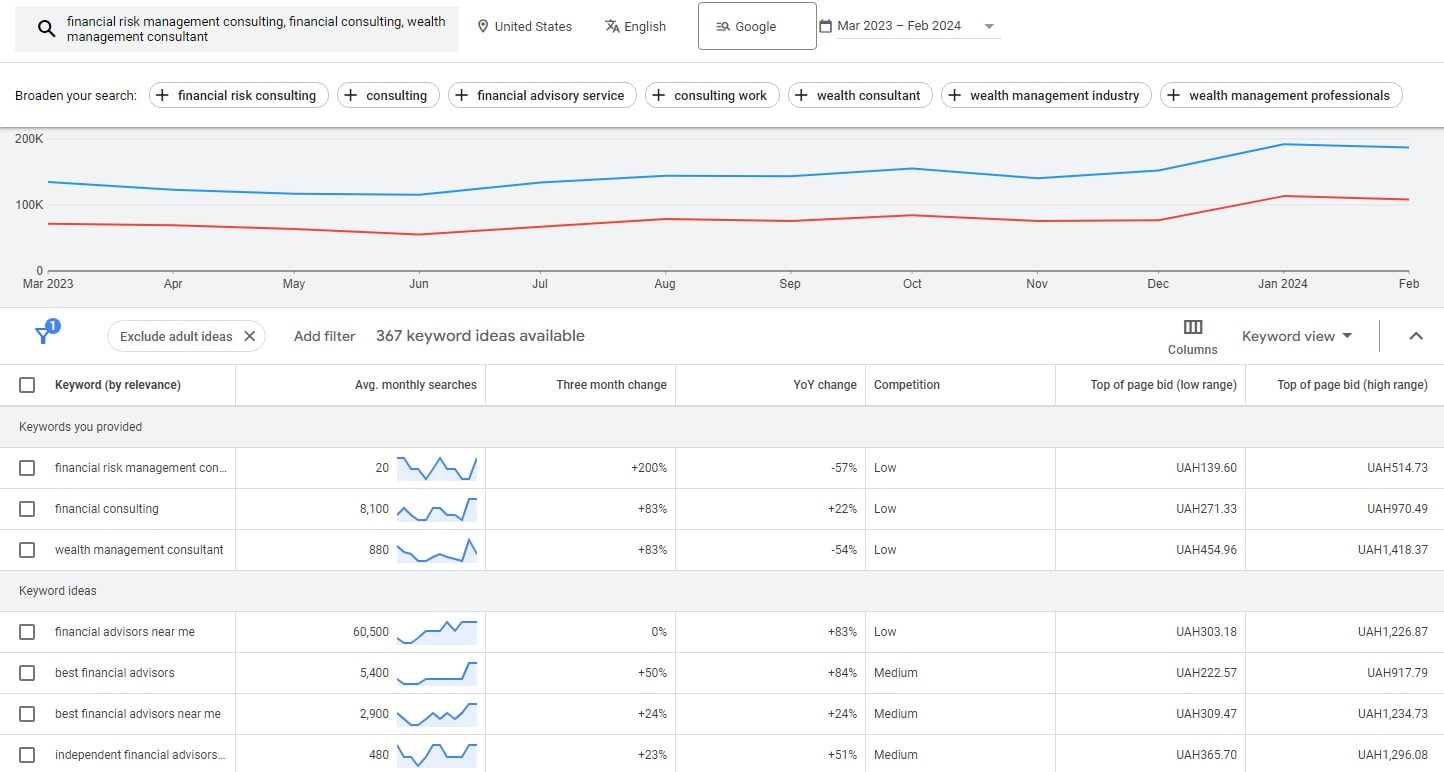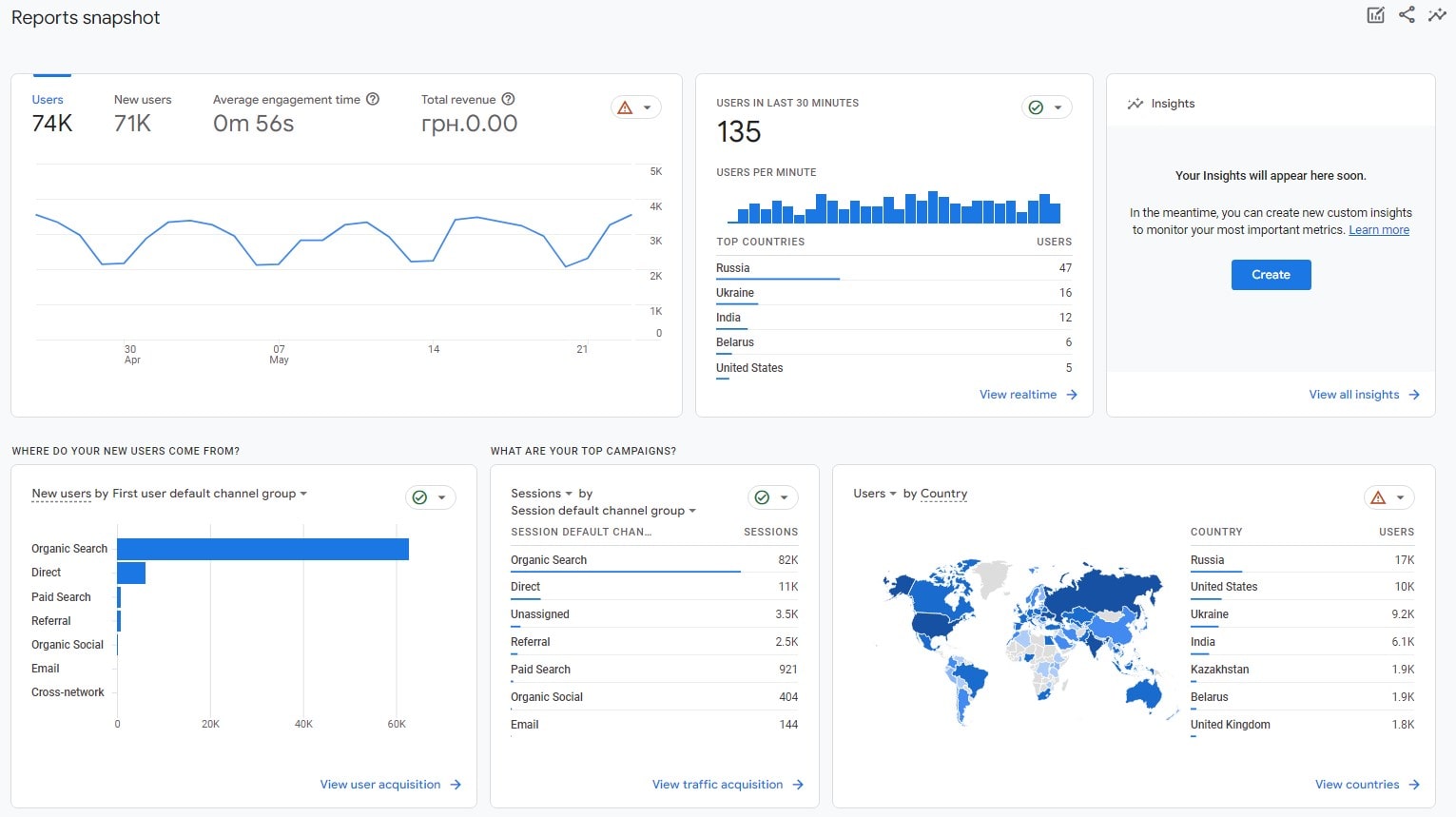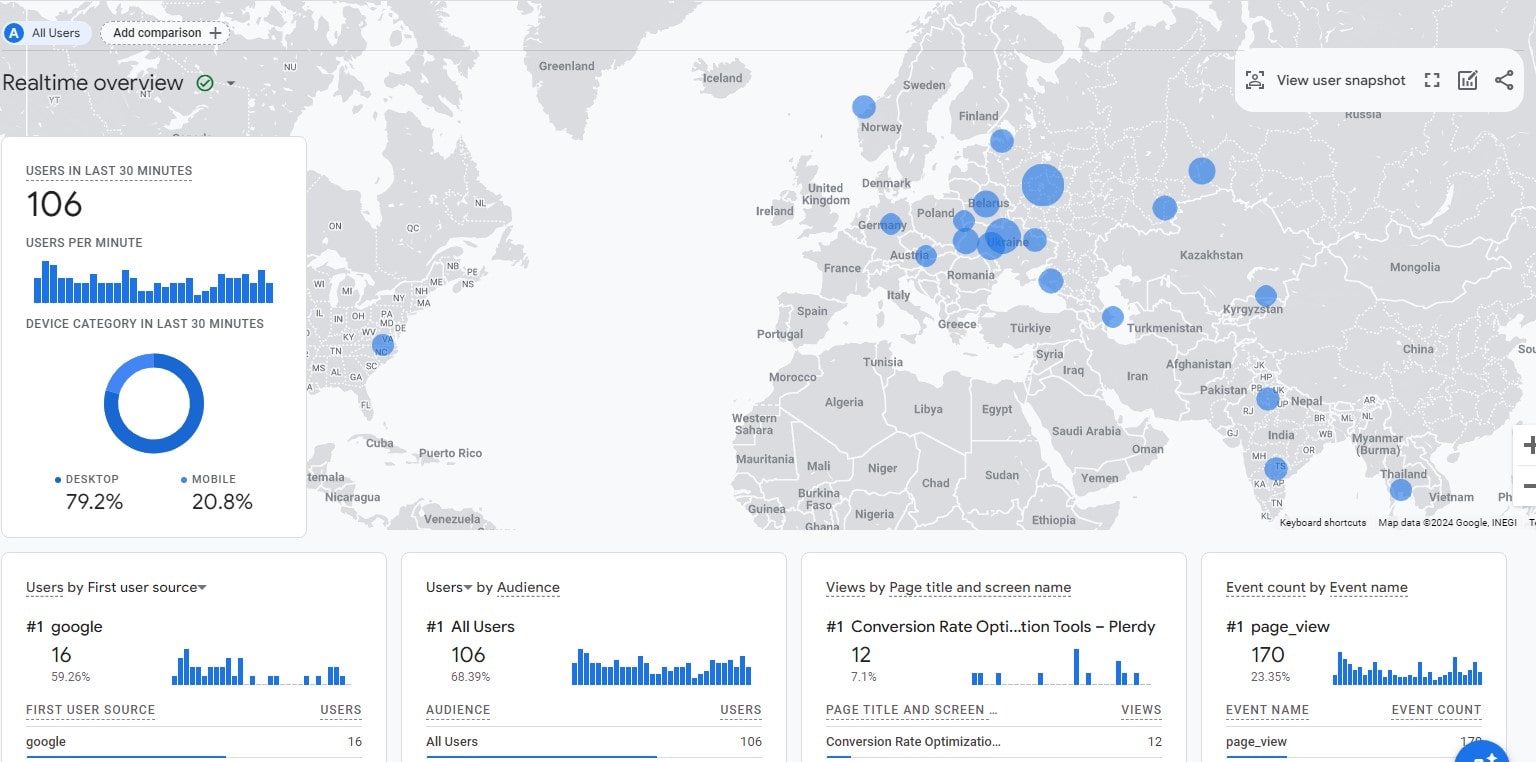Imagine Googling “how to become invisible” and finding something useful. Welcome to the world of Search Engine Marketing (SEM), where visibility is the game’s name and being seen is just as magical. SEM is a digital marketing strategy that boosts your website’s presence on search engines through paid advertising. It’s not just about getting your brand out there; it’s about making sure it shines brighter than a diamond in a sea of costume jewelry. Here at Plerdy, we understand the importance of SEM in turning clicks into customers. Explore this post to learn how SEM may improve your internet presence and why it is essential to your marketing arsenal.
Understanding SEM

When you search online, how often do you click past the first page of results? Rarely, right? That’s where Search Engine Marketing (SEM) plays a crucial role. It’s not just about being present; it’s about being prominent. SEM harnesses the power of search engines like Google to propel your website to the top of the results, ensuring it catches potential customers’ eye.
Definition and Scope of SEM
Search Engine Marketing, or SEM, is a targeted marketing strategy that increases a website’s visibility through paid advertising and organic SEO. Using tactics such as pay-per-click (PPC) advertising, SEM allows businesses to position themselves prominently in search engine results pages (SERPs) when users search for related keywords. SEM is integral to a robust digital marketing strategy, providing a unique opportunity to swiftly drive traffic and convert interest into action. The primary objective is not just to increase exposure but to enhance the quality of traffic reaching your site, making it a powerful tool for businesses seeking immediate results in their marketing efforts.
History of SEM
The evolution of SEM is marked by significant milestones that mirror the advancements in digital technology and internet usage. Initially, search engines like Google revolutionized how information was accessed, giving birth to early forms of SEM in the late 1990s. Since then, the approach has evolved from simple text ads to sophisticated, data-driven campaigns that can target specific demographics and search behaviors. As the internet became more ingrained in daily life, the importance of SEM grew, making it a critical element of successful marketing strategies. The development of SEM is a testament to its efficacy in adapting to the changing landscapes of technology and consumer behavior.
Importance of SEM
In today’s digital age, SEM is more than just an option; it’s necessary. The battle for visibility is fierce, with millions of searches conducted every second. Effective SEM strategies ensure that your business is seen and considered by potential customers who are ready to engage. This marketing approach provides:
- Measurable results.
- Allowing businesses to track every click and every dollar spent.
- Presenting an accurate image of the ROI (return on investment).
Moreover, SEM’s agility in targeting specific keywords related to your business maximizes both reach and relevance, directly impacting your bottom line.
As we wrap up this section, it’s clear that understanding SEM’s layers—from its definition and history to its critical importance—is essential for any marketer aiming to leverage this powerful tool. Implementing SEM effectively means engaging with customers at the crucial moment of their search, driving visibility and conversion. With this knowledge, businesses can craft strategic campaigns that reach and resonate with their target audience, ensuring their digital marketing efforts bear fruit in an increasingly competitive online world. SEM is a beacon in digital marketing, whether you want to increase your visibility or target.
Key Components of SEM

Every time you use a search engine, you enter a complex world where every click and every search term is part of a vast digital marketplace. Search Engine Marketing (SEM) is the tool that helps businesses navigate this space, using sophisticated components to ensure visibility and drive traffic. Let’s dissect the key components that make SEM a critical tool for any digital marketer looking to enhance their online presence.
Paid Search Ads
Paid search ads are the most visible elements of SEM, appearing at the top of the search engine results pages (SERPs). These ads are strategically placed to capture potential customers’ attention when they express interest in specific products or services. The success of paid search ads relies heavily on effective keyword targeting, where SEM professionals use SEO principles to select keywords that maximize visibility and conversion rates. Google and Bing Ads are the main platforms for these ads, allowing advertisers to build, manage, and optimize sponsored search campaigns.
Pay-Per-Click (PPC) Advertising
PPC advertising charges advertisers per click. It is like buying site views instead of “earning” them through SEO. This SEM component provides immediacy and accurate targeting, which can boost ROI. Advertisers can set budgets, choose the geographic location for ad display, and target specific demographics, all of which help to control costs and maximize the effectiveness of their marketing spend.
Integrating SEO with SEM
While SEM primarily focuses on paid strategies to increase visibility, integrating SEO techniques can enhance the effectiveness of SEM campaigns. This integration involves using SEO to improve the quality and relevance of the ads and their landing pages. The synergy between SEO and SEM improves ad quality scores and reduces the cost per click (CPC). Effective SEO strategies optimize landing pages for search engines and users, improving user experience and conversion rates.
Understanding these components of SEM is vital for anyone involved in digital marketing. The combination of paid search ads, PPC advertising, and the strategic integration of SEO constitutes a robust approach to dominating the digital marketing landscape. As you embark on or enhance your SEM strategies, remember these components to ensure your campaigns are well-rounded and effective.
As we conclude this exploration of SEM’s key components, it’s clear that mastering these elements can significantly boost your online marketing efforts. From crafting attention-grabbing paid ads to optimizing the technical aspects of your campaigns with SEO, each component plays a critical role in achieving success. By effectively leveraging these tools, marketers can increase visibility and drive meaningful engagement and conversions, ensuring a strong presence in the competitive digital marketplace.
Developing an SEM Strategy

Navigating the vast ocean of digital marketing requires a robust map, and developing a strategic SEM (Search Engine Marketing) approach provides just that. Whether you’re looking to enhance visibility, increase conversions, or get ahead of your competitors, a well-structured SEM strategy is key. Let’s walk through how to craft a strategy that meets and exceeds your digital marketing goals.
Keyword Research
The cornerstone of any successful SEM campaign is effective keyword research. Identifying your target audience’s search phrases is essential for personalizing content and adverts to their demands. Utilize tools like Google’s Keyword Planner or SEMrush to discover high-value keywords relevant to your products or services. The goal is to select keywords that balance a high volume of searches with a level of competition that is manageable for your budget and resources.
Setting Objectives and Budgets
Before launching an SEM campaign, it’s essential to set clear objectives. What are your goals? Gain brand exposure, sales, or traffic to a new product? Once your objectives are clear, allocate a budget that reflects your goals without overspending. Define KPIs like click-through rates (CTR), conversion rate, and cost per acquisition (CPA) to monitor campaign success against initial goals.
Creating Compelling Ads
With your keywords and objectives in hand, the next step is to create compelling ads. A successful SEM ad should include a powerful headline, an engaging description, and a clear call to action (CTA). Your ad should address your target audience’s requirements and interests and relate to your keywords. Relevance is key to getting clicks and a high-quality Google Ad score, which can cut your CPC and enhance ad placement.
A well-rounded SEM campaign requires more than simply advertising; it must align with your marketing goals. By following these steps—conducting thorough keyword research, setting clear objectives and budgets, and crafting compelling ads—you can create an SEM strategy that effectively captures the attention of your target audience and converts them into customers.
Developing an effective SEM strategy increases search visibility and creates targeted interactions that drive user engagement and conversions. By meticulously planning each aspect of your strategy, from keyword selection to ad creation, you can leverage SEM to deliver tangible results that propel your business forward. Keep your goals in mind, change your methods depending on performance data, and optimize to stay ahead in digital marketing.
Measuring SEM Success

Launching an SEM campaign isn’t the end of the road—it’s just the beginning. To truly navigate the effectiveness of your Search Engine Marketing efforts, you need robust tools and metrics that accurately measure success. Understanding these metrics helps validate your current marketing strategies and guides future optimizations. Here’s how to precisely measure SEM campaign success.
Analytics and Tools
The backbone of any SEM measurement is the analytics platform used. Google Analytics is a fundamental tool that offers insights into your campaign’s performance. It tracks ad clicks and conversions to provide a complete picture of campaign performance. For a deeper dive into keyword performance and competitive analysis, SEMrush offers detailed reports that help refine your SEM strategies. These tools allow you to monitor your campaigns in real-time, adjust bids, change keywords, and optimize ads to enhance performance.
Understanding SEM Metrics
Focusing on numerous KPIs is essential to measuring SEM success:
- Click-through Rate (CTR): The percentage of viewers who click on your ad. A high CTR indicates that your ads are relevant and appealing to your target audience.
- Cost-per-Click (CPC): Monitoring your CPC helps you understand how much you pay each time someone clicks on your SEM ads. It’s vital to manage the budget efficiently and ensure you are not overpaying for clicks.
- Conversion Rate: One of the most important metrics is conversion rate, which shows what percentage of ad clicks result in a sale, sign-up, or other goal.
- Quality Score: A Google Ads metric that measures ad and keyword relevancy and quality. A higher Quality Score lowers CPCs and improves ad rankings.
Setting up goal tracking in Google Analytics is essential to measuring these effectively. By defining specific actions you want users to take on your website, you can see exactly how well your ads drive those actions.
In wrapping up, measuring the success of your SEM campaigns is about more than just tracking sales. It involves a comprehensive look at how your ads perform across various metrics, understanding user behavior, and continually optimizing to improve results. With the right tools and attention to detail, you can turn insights into action and significantly enhance your SEM strategies.
By using these analytics tools and understanding what each measure informs you about your campaign, you can improve your strategy and make smarter judgments. The goal of measuring SEM isn’t just to see what happened—it’s to shape what happens next.
Audience Segmentation and Targeting

Effective SEM isn’t just about reaching people; it’s about reaching the right people. Audience segmentation and targeting are crucial for optimizing your SEM efforts.
- Demographic Targeting: Start by identifying the age, gender, income, education, and other demographic factors of your target audience. This helps design and target ad campaigns to the right audience.
- Geographic Targeting: Geographic targeting allows you to customize your campaigns based on location, whether targeting a local community or multiple countries. Businesses with physical locations or location-specific services benefit from this.
- Behavioral Targeting: By analyzing user behavior, such as past purchases, search patterns, and website interactions, you can create highly personalized ad experiences. Tools like Google Ads offer options to target users based on their interests and the likelihood of their conversion.
Segmenting your audience guarantees that your marketing expenditure goes to high-converting consumers, increasing ROI and reducing waste.
Ad Copy and Creative Optimization

SEM campaign success depends on ad wording creative quality and relevance.
- Compelling Headlines: Your ad headline is the first thing a user will notice. Make sure it’s captivating and directly addresses the needs or problems that your product or service can solve.
- Clear and Concise Copy: Avoid jargon and complex language. Keep your ad copy clear, concise, and focused on the benefits to the user.
- Strong Call-to-Action (CTA): Your CTA should be strong and clear, telling users exactly what you want them to do next. Whether it’s “Shop Now,” “Learn More,” or “Sign Up Today,” ensure that it stands out and is actionable.
- Use of Visuals: Use photos or videos to make your ad more interesting. Visuals can dramatically increase click-through rates by quickly capturing attention and conveying your message.
TTesting diverse ad language and visuals helps you optimize by revealing what your audience likes.
Advanced SEM Strategies

To further enhance your SEM efforts, consider implementing advanced strategies that leverage the latest tools and technologies.
- Remarketing: Remarketing lets you target website visitors who did not buy or take action. Displaying relevant adverts to these users as they surf other websites can boost conversions.
- Mobile Optimization: Mobile SEM campaign optimization is essential as mobile internet surfing and searching grows. This includes creating mobile-friendly landing pages and using mobile-preferred ads.
- Integration with Other Digital Marketing Channels: SEM should not operate in isolation. It can be integrated with SEO, social media, and email marketing to create a more holistic approach.
- Use of Artificial Intelligence (AI) and Machine Learning (ML): AI and ML can automate bidding strategies, offer predictive insights about campaign performance, and personalize ads based on user behavior and preferences.
Staying current on SEM platforms like Google Ads and Bing Ads might open new optimization and growth opportunities.
As you expand your knowledge and application of these advanced strategies, you’ll enhance your ability to reach and engage your target audience and maximize the overall effectiveness of your SEM campaigns.
In conclusion, SEM is a dynamic and powerful tool in the digital marketing arsenal. Understanding and implementing precise plans covering audience segmentation and complex technical integrations can help businesses develop and profit in a competitive online environment. The key to successful SEM is continuous learning, testing, and optimization to stay ahead of the curve in the digital marketing world.
Conclusion
In the vast and ever-evolving world of digital marketing, SEM stands as a cornerstone, pivotal for achieving heightened visibility and driving engagement. As you’ve seen, mastering SEM involves more than just launching campaigns; it requires a deep understanding of market dynamics, targeted strategies, and continual optimization. Information is crucial to staying ahead in digital marketing, which changes regularly.
Are you curious about how to enhance your marketing strategies further? Dive into other articles on Plerdy’s blog, where we continuously explore cutting-edge tactics and insights that could revolutionize your approach. Ready to elevate your SEM strategy with expert tools? Discover how Plerdy’s comprehensive solutions can empower your business’s digital marketing efforts today. Let’s navigate this digital journey together, optimizing every step.
